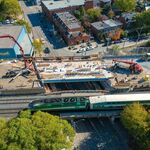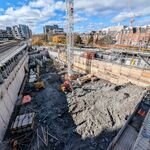Just had a thought: What about the possibility of introducing a 10% "Flex Fund" into the equation? Basically, what this would be is a general fund that would be used "for local transit projects that are deemed to have a regional significance". A general booster fund for important projects that don't quite have enough funding from their set municipal allocations.
This would decrease the amount of money available to each of the municipalities, but could potentially be used as extra revenue for projects like the DRL, which certainly have a regional significance. My only worry is that doing something like this could lead to complaints of favouritism towards certain municipalities. When it's simply divided up based on population, at least it's transparent and equitable.
This would decrease the amount of money available to each of the municipalities, but could potentially be used as extra revenue for projects like the DRL, which certainly have a regional significance. My only worry is that doing something like this could lead to complaints of favouritism towards certain municipalities. When it's simply divided up based on population, at least it's transparent and equitable.





